Disclosure: Please note that some links are affiliate links, and at no additional cost to you, we earn a commission if you make a purchase.
If you would like to support this website in some way, using these links will help do exactly that.
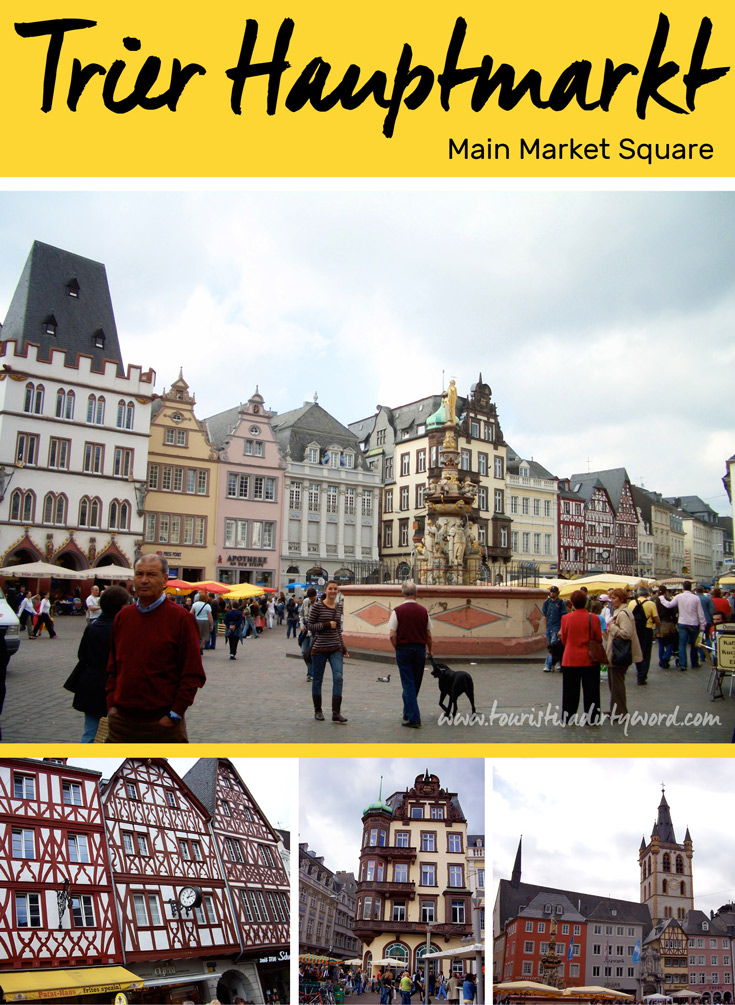
The center of Trier is dominated by a large and fascinating market square called Hauptmarkt, meaning Main Market Square. The very first market square of Trier was at the river, but in the 10th century Archbishop Heinrich I moved the main market square to its current location. In the middle ages, the market was used for trade of goods and to this day you will see many vendor booths selling fresh produce, souvenirs and flowers. The right to hold markets was also granted in the 10th century, which means the vendors at the market had to pay a fee or tax to the city in order to do business there.
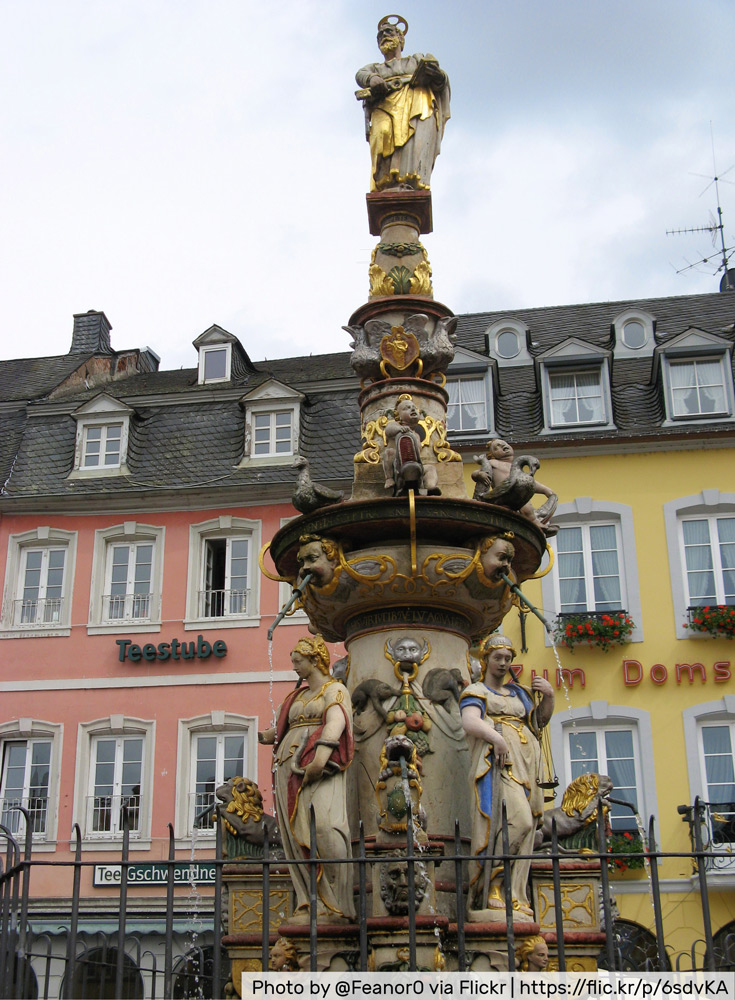
The market centers around the much decorated Petrusbrunnen (Fountain of St. Peter), which was built in 1595. It shows St. Peter, the patron saint of Trier, surrounded by the four virtues Fortitude, Justice, Prudence, and Temperance, all as female figures. In contrast, you will see monkeys and monsters portraying the vices. In between the female figures are animals such as dolphins, eagles, geese, and lions together with a coat of arms. Take your time to circle the fountain to find even more interesting elements.
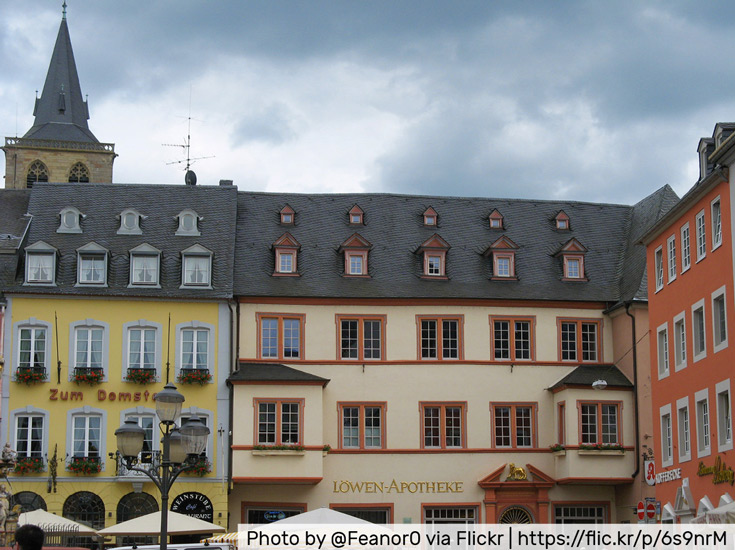
From the fountain we also spotted the Löwenapotheke (Lion’s Pharmacy), which is the oldest pharmacy in Germany - first mentioned in 1241. Across from the pharmacy is the tallest building of the market square, which is called Steipe, which means “to lean on” in the Trier dialect. The white, castellated building got its name from its short pillars on top and was originally built in 1430 (see the first picture). During WWII the Steipe was completely destroyed, but reconstructed in 1968, after a lengthy discussion of the citizens, who were trying to decide between a modern building and the reconstruction of the original Steipe building. I am glad the citizens of Trier voted for the reconstruction of the original building, it looks authentic and fits perfectly into the market picture.
On the ground level of houses on the square are restaurants, cafes and shops. It sure takes a while to get a feel for the space and to take it all in. Why not sit in one of the cafes and enjoy some German cake and coffee? This should give you some extra energy to explore the other sights of Trier.
An interesting fact about the main market square: All roads in Trier lead to the Hauptmarkt, which makes it a great place to navigate from. When you stand at the Petrusbrunnen fountain in the center, you will have the Porta Nigra to the north, the Cathedral to the east, the Kaiserthermen to the south, and the Mosel river to the west.
This was actually the first market square I have ever taken Denise to, and it is by far one of the prettiest in Germany with its colorful restored facades and old town feel. Have you been there? What was your most favorite memory of the Trier Hauptmarkt?
Follow Along
If you enjoyed this article, or these topics sound interesting to you, you'll love our weekly newsletter. You'll receive a free Germany Packing list for signing up, and you'll receive each week's newest posts every Friday. Thank you for reading!

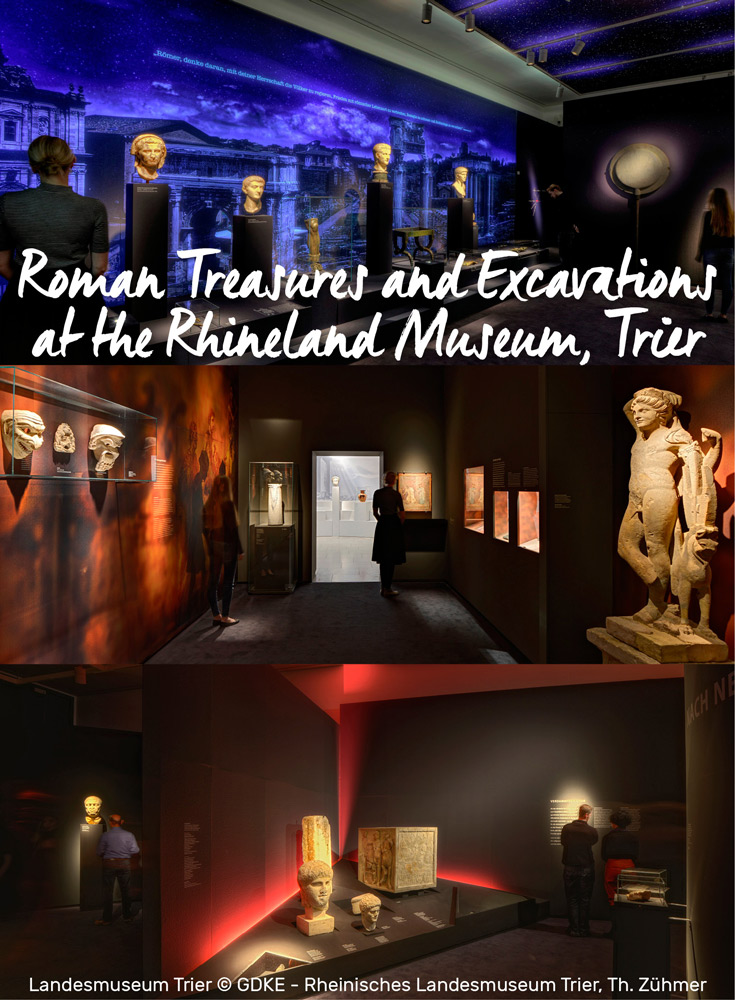
If you really want to dive back into an era where Roman emperors governed Trier, you should not miss the Rheinisches Landesmuseum, Rhineland Museum, in Trier. It is spiked full of history with more than 4,000 artifacts, with the most valuable of them behind separate glass enclosures. The glass enclosures let you not only see each and every detail up close, but also give you a 360 degree view of many of them without jeopardizing the art treasures.
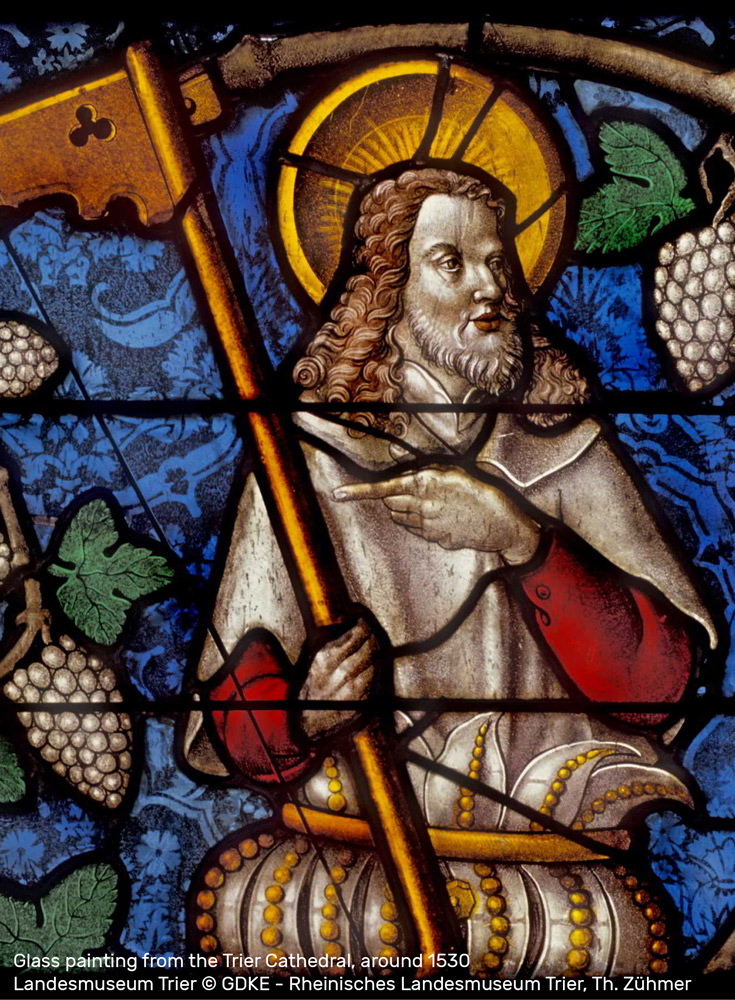
The museum is not only limited to the Roman Era of Trier, although it is the biggest draw for this museum. It starts with excavated weapons and other finds from the stone age, continues through Roman and Frank times and ends with the last elector of Trier. Particularly interesting were the many busts and building elements from Roman times including a large replica of the city of Trier, created on the basis of many excavations. There are also many large and impressive building columns that were recovered and restored back to their original beauty.
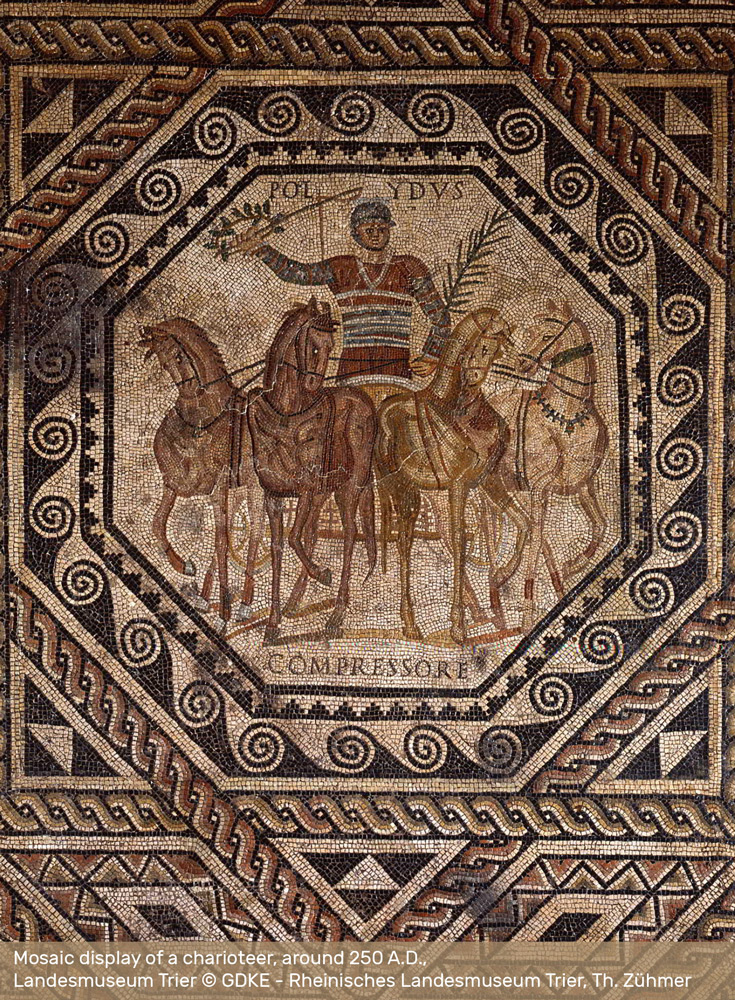
The Rhineland museum features the oldest archaeological collection in all of Germany, including the largest coin treasure ever found in Germany (2,500+ coins in 1993) and many original pottery items, so make sure you plan several hours for a visit.
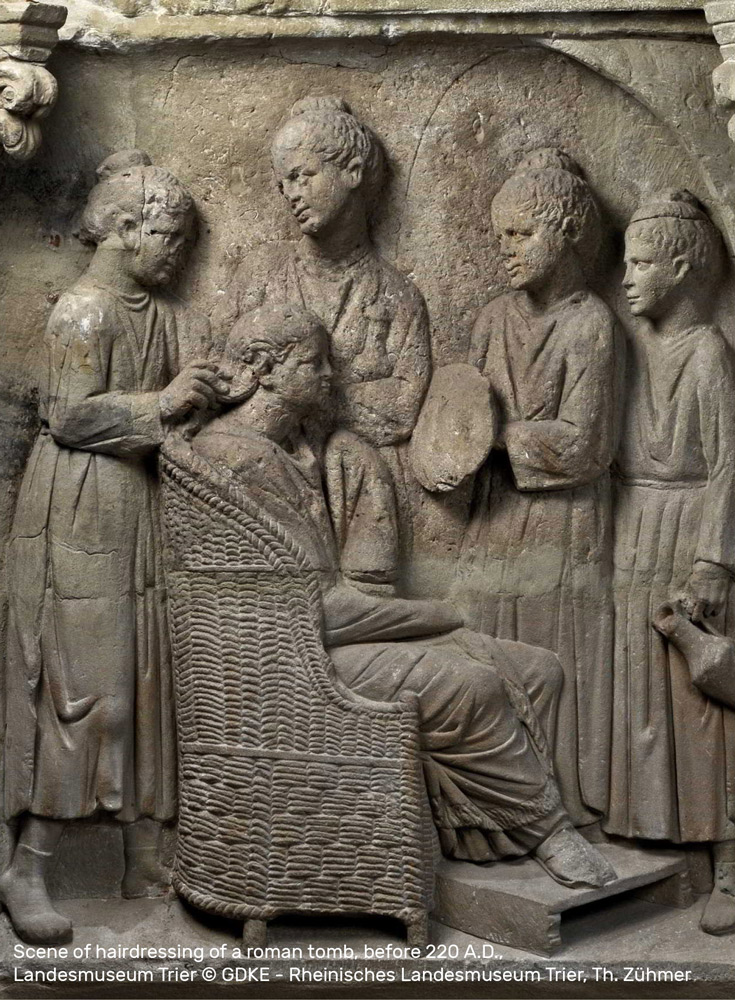
Make sure you do not miss the multimedia presentation “Im Reich der Schatten,” In the Kingdom of Shadows, which is shown twice daily. You will be in a room filled with Roman gravestones with floor to ceiling panoramic projections for 45 minutes. It tells the story of Gaius Albinius Asper, who mourns his dead wife Secundia. The fictitious plot shows his search in the world of the dead to find Secundia, his late wife. Whether Secundia really died before Albinius or not, we can only guess today. For 45 minutes we plunged into another world where we saw how stone-carved figures and characters came to life.
Included in the entrance fee is a great audio guide, that also has an English language option and will give you a much better understanding of the stories that go along with the artifacts.
Follow Along
If you enjoyed this article, or these topics sound interesting to you, you'll love our weekly newsletter. You'll receive a free Germany Packing list for signing up, and you'll receive each week's newest posts every Friday. Thank you for reading!

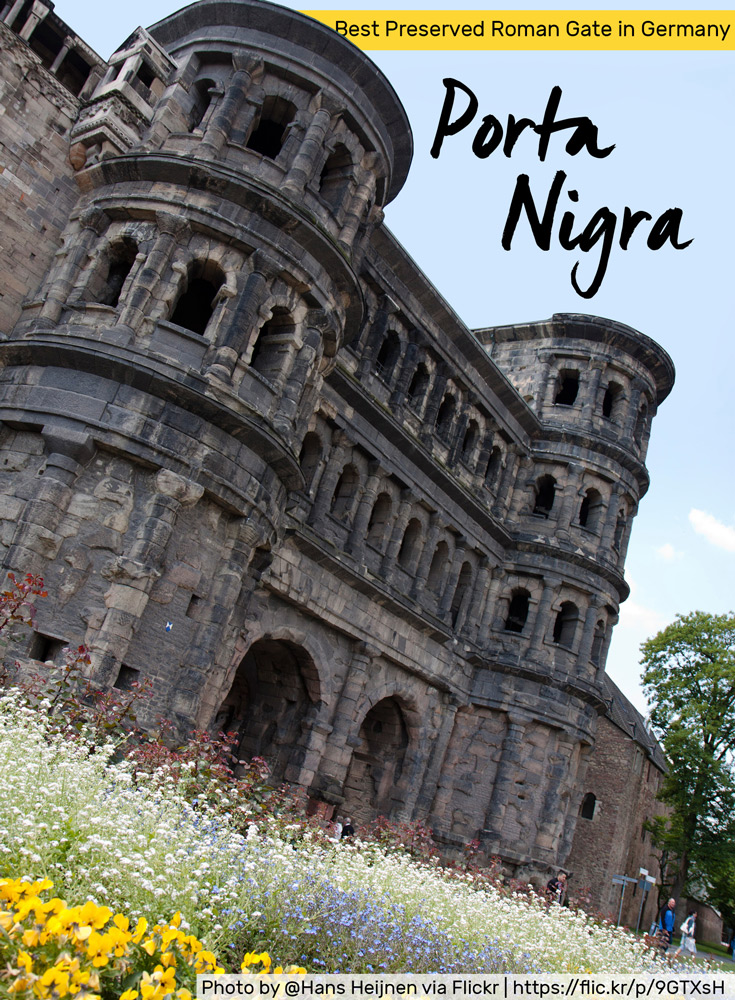
“I can’t believe we can get this close to it!” Denise exclaimed. Ever so delicately, she reaches out and puts her palm on the dark, cold stone of the Porta Nigra. “This is officially the oldest thing I’ve ever seen or touched!” Her smile lit up her whole face.
Of course it's not hard to find old things in Germany, but Trier especially has it's fair share of OLD.
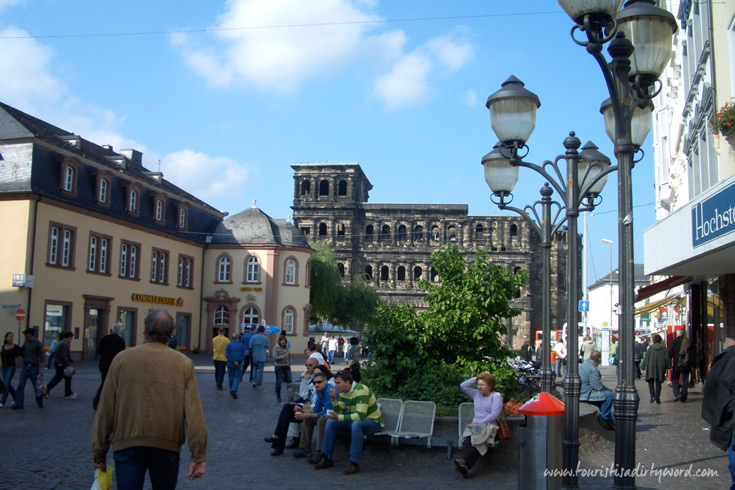
A fascinating building in the middle of Trier with an eventful history of almost 2000 years: Today we take a look at the Porta Nigra - the Black Gate, which the residents simply refer to as “Porta.” It is named for the color of its now dark gray sandstone, which originally had a pinkish red tint, but had discolored over the years and was renamed in the Middle Ages since the original Roman name had not been preserved.
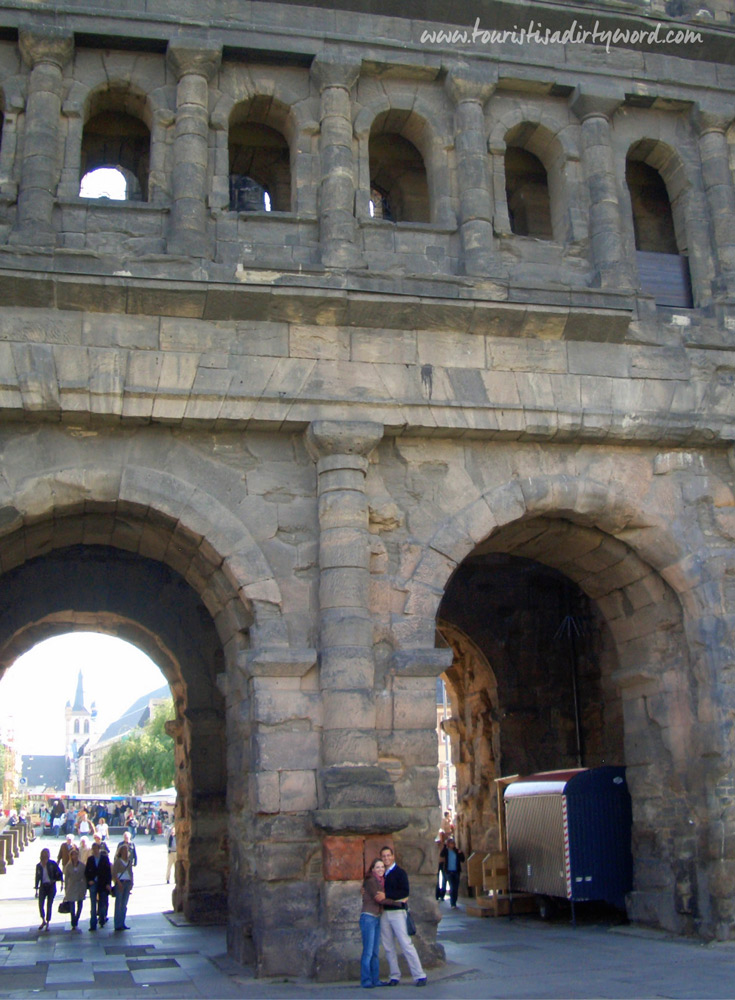
The Porta Nigra is a former Roman city gate and the best preserved in Germany. It was originally built between 186 and 200 AD with a 4-storied tower to the left and to the right of the gate. A total of about 7200 sandstone blocks were used for the construction with the largest ones weighing up to 6 tons.As one of four gates in the city of Trier, it protected the northern entrance to the city. There were also the Porta Media (Middle Gate) in the south, the Porta Alba (White Gate) in the east, and the Porta Inclyta (Famous Gate) in the west.
Only the Porta Nigra survived because the stones of the other gates were used as building materials during the middle ages, after the Romans had left Trier. However, the lead and iron braces were removed from the Porta Nigra for reuse, a damage that is still visible today.
Greek Monk Symeon
In 1028 a Greek monk named Symeon asked Poppo, the Archbishop of Trier, if he could live as a recluse in the Porta Nigra and his wish was granted. He was immured inside the Porta Nigra, living a life of poverty and chastity. Symeon of Trier passed in 1035 and was sanctified, after miracles were being reported to be happening at his tomb. Archbishop Poppo later founded a monastery at the site of Symeon's tomb called Simeonstift in his honor and you can still look over into the monastery from the Porta Nigra.
The Porta Nigra itself was transformed into a church, with the inner courtyard roofed and two intermediate ceilings inserted in the western tower. The upper floor was for the monks and the lower floor for the general public. The eastern tower was leveled, since it was not needed anymore, and an additional gate, Symeon Gate, was built adjacent to the east side of the Porta Nigra. The ground floor was closed off and an outside staircase was added in order to reach the upper floors. Almost 800 years passed without any major changes.
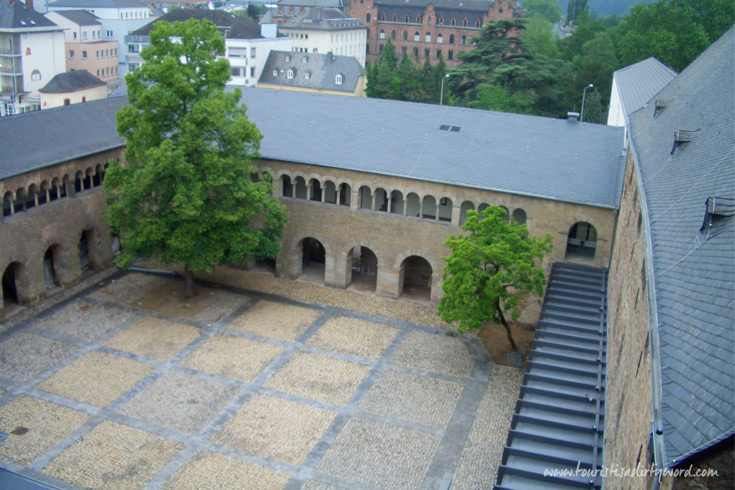
Napoleon in Trier
In 1802, Napoleon Bonaparte, the French military leader, came to Trier and dissolved the church in the Porta Nigra and also the monastery beside it. When he returned in 1804, Napoleon ordered the Porta Nigra to be converted back to its Roman form as a gate, and all church-related pieces were gutted from 1804 to 1809. Local legend has it that Napoleon originally wanted to completely tear down the Porta Nigra, but supposedly locals convinced him that the church was a Gaulish festival hall. While another version of the legend is that the people of Trier told him about the Roman origins of the gate, persuading Napoleon to convert the gate back to its original form.
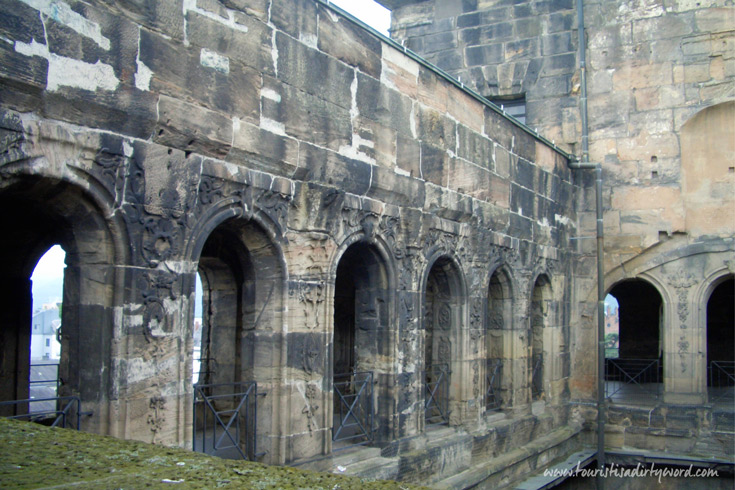
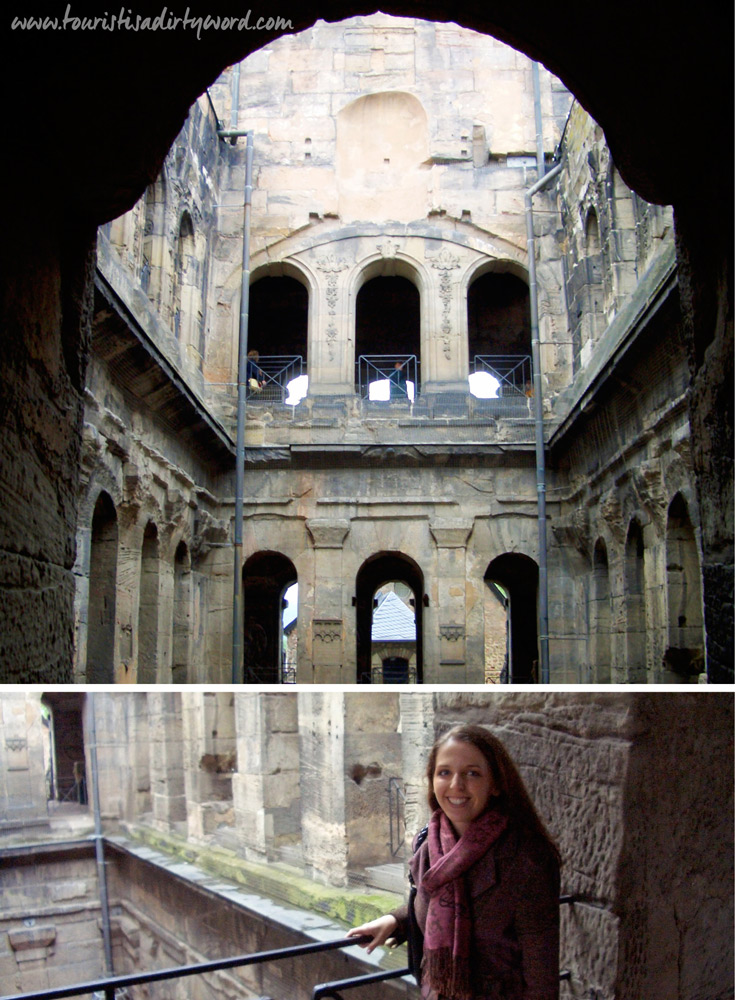
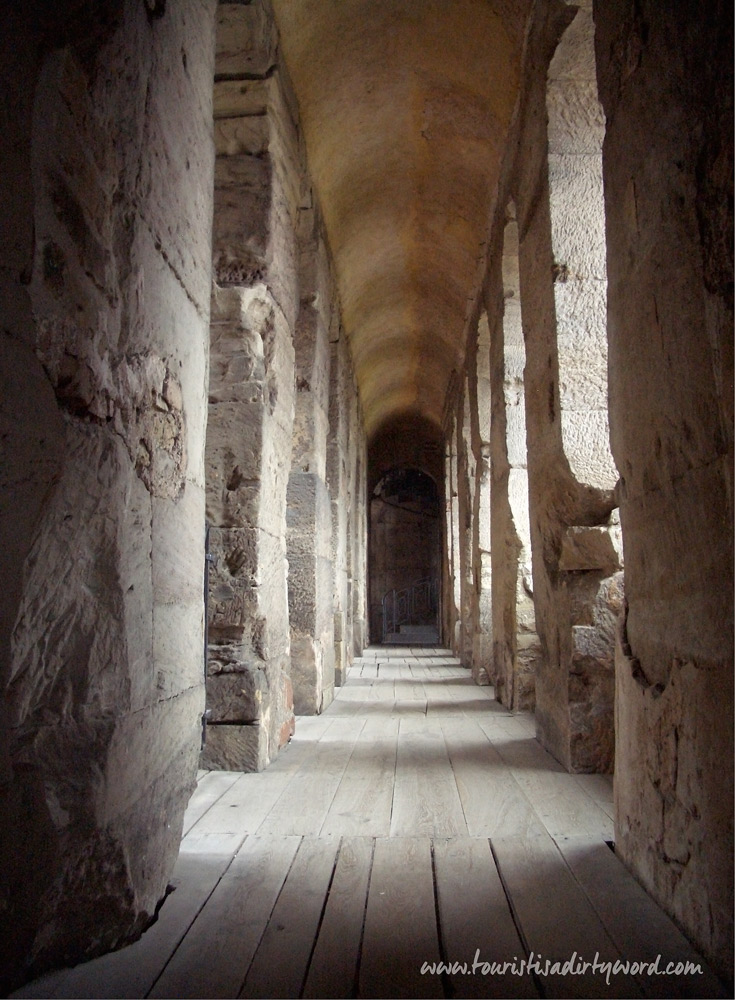
UNESCO World Heritage Site
The Porta Nigra was henceforth used as the first antiquity museum of Trier and in 1986 the Porta Nigra was designated as part of the UNESCO World Heritage Sites. To learn more about what it means to be a UNESCO World Heritage Site, be sure to check out this post. Today you can visit all levels of the Porta Nigra and if you are in Trier during the warm summer months, look for a tour guide in full Roman armor leading the guided tours.

Follow Along
If you enjoyed this article, or these topics sound interesting to you, you'll love our weekly newsletter. You'll receive a free Germany Packing list for signing up, and you'll receive each week's newest posts every Friday. Thank you for reading!

